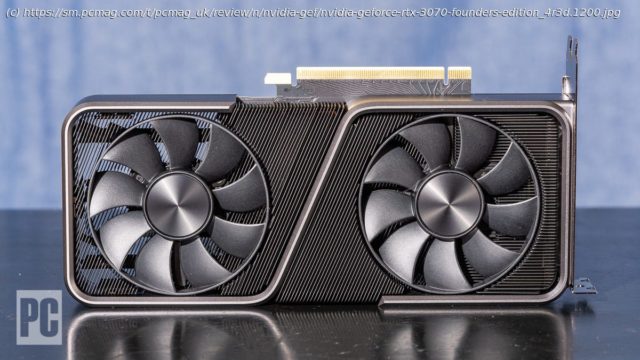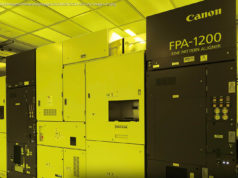Near GeForce RTX 2080 Ti power for less than $500.
«Faster than RTX 2080 Ti.» You might have seen Nvidia’s claim a few weeks back; we saw it, too. That was a tall order for Nvidia’s $499 «Ampere»-based GeForce RTX 3070 Founders Edition graphics card. The mission: Beat last generation’s top-end «Turing» card (the $1,199 Nvidia GeForce RTX 2080 Ti Founders Edition), and do it for less than half the price. Well, the numbers are in, and we have to give Nvidia some serious props. In our tests, at 4K resolution, the RTX 3070 indeed pulls off the frame-rate wins at times, and when it can’t, it is very close. Meanwhile, it trades blows with and sometimes ties the RTX 2080 Ti at lesser resolutions. Again: for $499. It’s not a by-the-numbers TKO, but in a larger sense, what the RTX 3070 does is still a knockout. Pull back, and consider that the RTX 3070 is cheaper than the RTX 2080 Ti by a factor of, oh, an entire budget gaming PC. Plus, it flattens RTX 2070 cards (and all AMD comers) in our suite of benchmarks. The expertly designed GeForce RTX 3070 Founders Edition is not the absolute fastest video card on the planet, but it deals almost every other card on shelves today (barring its RTX 3080 and RTX 3090 kin) a brutal takedown. It earns our Editors’ Choice award and a perfect 5-star score as the best video-card value of this, or any, year. The RTX 3070: Sussing Out the Specs Before we get to that benchmark beatdown, though, let’s dig into the specifications of the Nvidia GeForce RTX 3070 Founders Edition. We’ll also see how it holds up against competing AMD options at a similar price, and against the cards it’s set to replace in Nvidia’s Turing line, the GeForce RTX 2070 and RTX 2070 Super. The RTX 3070 Founders Edition, like the RTX 3080 version, serves as a reference card for video-card makers, and a baseline on specs for the third-party versions of the RTX 3070 to come. Both it and the first third-party cards go on sale on Oct.29. In the U.S., you’ll be able to buy RTX 3070 Founders Edition cards directly from Best Buy and Microcenter (online or in-store), while Canadian customers should pursue it at BestBuy.com. A side note: Before we get into the nitty-gritty of the specs, it should be noted that last year I gave an Editors’ Choice award to the GeForce RTX 2070 Super as not just a great graphics card, but as one of the best values that Nvidia had offered to gamers in literal generations. It felt like a return to form, and up until the release of the RTX 3070, the RTX 2070 Super was the leader in gaming price-to-performance (with its driver stability taken into account as plus, too). This left the RTX 3070 with big shoes to fill both on value and raw performance, perhaps even larger than those of the RTX 3080 Founders Edition as the flagship of this new launch. On to what I consider the most important spec for this particular card launch: the price. The RTX 2070 Founders Edition launched at $599, and Nvidia is dropping that by $100. Score one there, even before you install the card. At the moment, the only competition AMD has at this price point are certain OEM models of the Radeon RX 5700 XT, or (if you can find one) a discounted AMD Radeon VII. It’s not a big secret that this could change soon, but for now, that’s what we’ve got solid numbers to compare to. In certain specs and nearly in launch price (though not in current street price), the reference-design AMD Radeon 5700 XT matches the RTX 3070, but the RTX 3070 comes to the table with so much upgraded gear and ancillary tech—DLSS support, a hyper-premium cooling design, and a major PCB shrink, for starters—that they might as well be different species altogether. Again, this could all change in the coming weeks, but until then, the Radeon RX 5700 XT is the key player from AMD’s camp. This additional aspect of the pricing could affect a lot of kids’ stockings this holiday season: The $499 RTX 3070 Founders Edition is the same price as both the Xbox Series X and the non-digital edition of the Sony PlayStation 5. Now, of course, you’ll need a gaming PC for the graphics card to reside in after you’ve unwrapped it, which is a cost unto itself. But for anyone already with a reasonable PC to upgrade, and the luxury of a $500 choice between a new GPU or a console, this is the exact card you should set your sights on. For those already living the #PCRideorDie life, it could be argued (and has been, extensively, on this site and others) that the cards set to benefit most from technologies like Nvidia’s DLSS aren’t necessarily the top-of-the-line ones, but rather the midrange and budget options like the RTX 3070 and (a rumored) possible RTX 3060 Ti. DLSS is a PC-only feature, and while it’s not the gangbusters system-seller we expected it to be just yet, the promise it holds for the gamers of tomorrow could be huge. The DLSS efficiency hinges on the Tensor Cores in the new Ampere cards as much as on the muscle of the rest of the card. Though the number of Tensor Cores in the RTX 3070 is smaller than in the RTX 2070 Founders Edition, it’s the generational leap in architecture that supposedly separates their capabilities. The new Ampere-based third-generation Tensor Cores, in very short English, are considerably better than their predecessors, according to Nvidia. The new cores’ architecture improvements largely rethink the original approach found in Turing-based GPUs. This means that while performance gains should be seen, regardless, due to the increased transistor density of the Samsung 8nm process in Ampere over Turing’s 14nm, Nvidia claims that the return in DLSS results should go well beyond that. Nvidia says to expect 2.7 times the performance with DLSS turned on over previous-generation Tensor Core iterations, but we’ll have to dig into the benchmarks to find out whether or not this claim rings true. More in a bit. The Latest Founders Edition Design: Still Fab On to the physical design of the RTX 3070 Founders Edition. Many of the same elements I loved in the RTX 3080 Founders Edition make their return here, and somehow, the even-more-compact profile of the RTX 3070 fits the aesthetic better. At 9.5 inches, the card is just a bit longer than a large smartphone, and for a second, when you go to grab it with one hand, you could almost forget that it’s not. Like with the RTX 3080, the RTX 3070 Founders Edition isn’t just one of the best-looking graphics cards I’ve seen, it’s some of the prettiest technology, period. It’s at once the most mature and intimidating that Nvidia has ever been, with just the soft, subtle glow of white LEDs providing the sheepskin for the wolf hidden underneath. With this card, Nvidia doesn’t have to show off anywhere except the benchmark results this time, and space that might otherwise be dedicated to RGB frippery can be used for maximizing cooling instead. The fans, in this case, are both on the same side of the card, unlike the unique top-and-bottom dual-fan design of the RTX 3080 and RTX 3090. In looking at Nvidia’s redesigned heatsink and cooling system, I’m reminded of the Apple Pro Display XDR (that of the infamous $1,000 monitor stand). It’s a monitor that has a lot of heat to dissipate when running at full HDR 1600 brightness level for hours on end. Apple’s solution to this was to turn the entire monitor housing itself into a giant heatsink, rather than building a heatsink on the PCB and then encasing it in a shell with fans and vents, like current monitor and TV manufacturers might.






